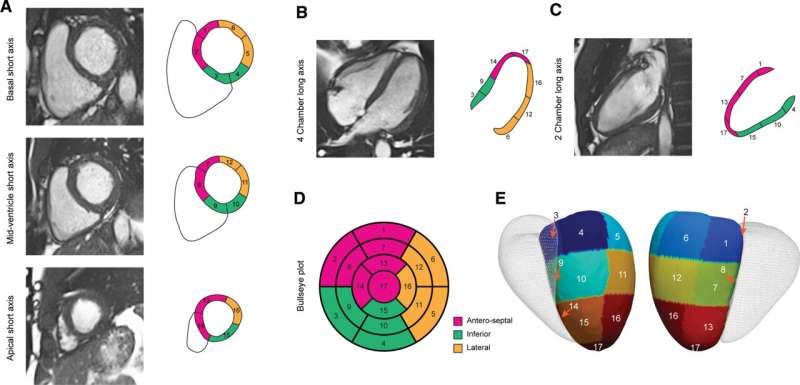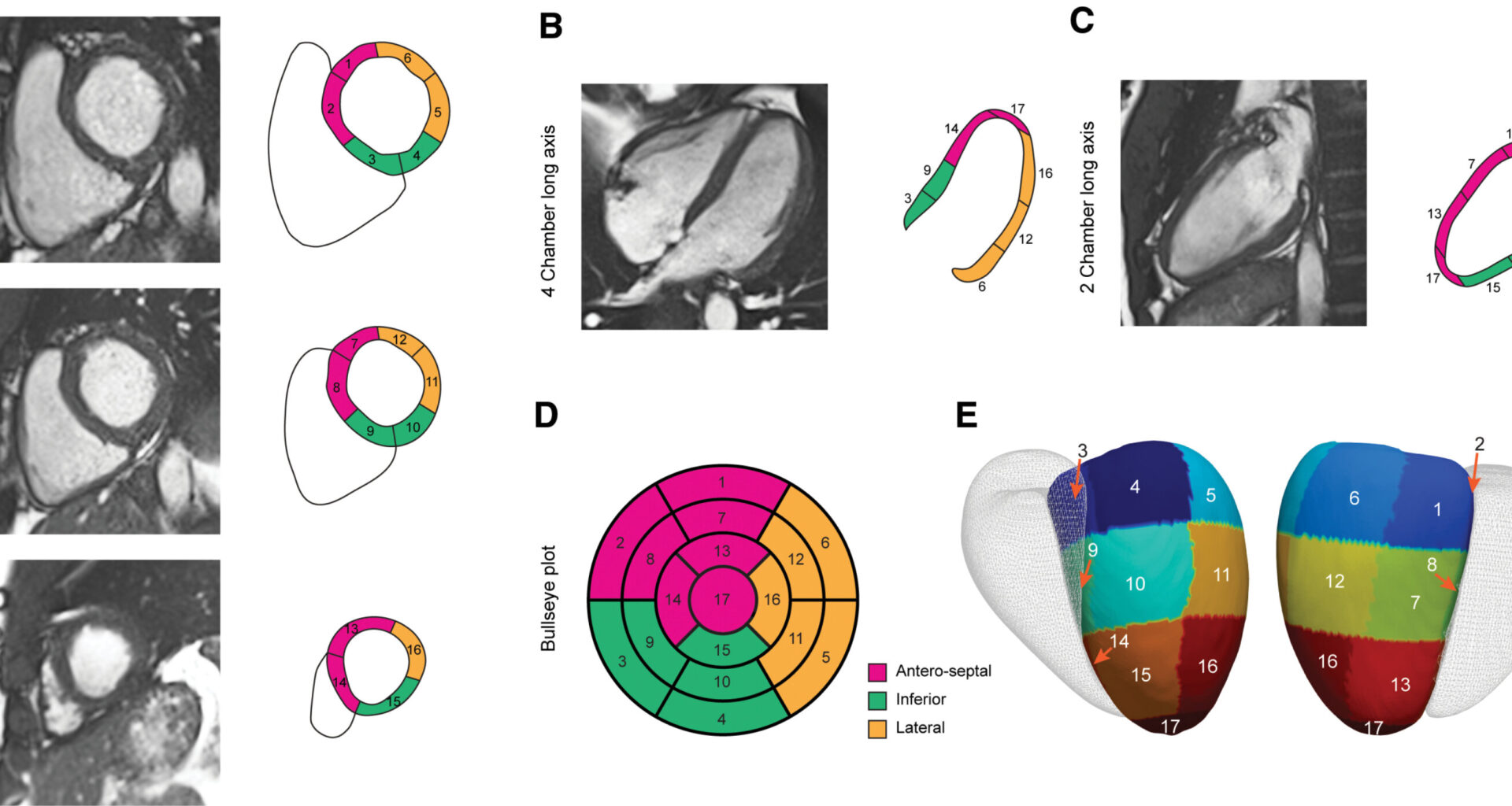
Cardiac image analysis. Credit: Circulation: Genomic and Precision Medicine (2025). DOI: 10.1161/circgen.124.005116
A major cardiovascular risk factor is thickening of the heart walls (hypertrophy), which can result from high blood pressure—but is also linked to inherited diseases of the heart which can lead to sudden death.
The human heart comprises 4 chambers; two atria (on top) and two ventricles (at the bottom). The left ventricle is the main pumping chamber which needs to adapt to changing demands placed on the heart. Recent research has shown that certain genetic factors can influence how an individual’s heart will remodel, affecting susceptibility to hypertrophic heart disease later in life.
Understanding these genetic determinants could allow the earlier identification of people who may be at greater risk for unhealthy heart remodeling and inform early interventions to protect long-term cardiac health. This work has also highlighted genes that could potentially be linked to excessive thickening of the heart muscle that occurs in families—a disease called hypertrophic cardiomyopathy.
In a world first, reported today in Circulation: Genomics and Precision Medicine, the computational cardiac imaging group team at the LMS, headed by Professor Declan O’Regan, conducted the first ever three-dimensional, genome wide analysis study (3D GWAS) of the heart.
Built from MRI data this video shows how the heart muscle contracts (strain) which the researchers used to find genetic associations. Credit: Professor Declan O’Regan, MRC Laboratory of Medical Sciences
“This work will help to identify potential new causes or modifiers of hypertrophy, which we know is a key risk factor for poor health outcomes,” said Declan.
Traditionally, GWAS studies looked for links between physical traits and genetic variations throughout the entire DNA sequence. In this study, the researchers used three-dimensional MRI images of the heart to see if variations in structure could be linked to variations in DNA. By integrating MRI-derived structural imaging data with genetic data from over 40,000 people, they discovered 42 new genetic locations (loci) that influence remodeling and hypertrophy of the left ventricle, of which 18 could not be identified using traditional GWAS techniques.
More information:
Chang Lu et al, New Genetic Loci Implicated in Cardiac Morphology and Function Using Three-Dimensional Population Phenotyping, Circulation: Genomic and Precision Medicine (2025). DOI: 10.1161/circgen.124.005116
Provided by
MRC Laboratory of Medical Sciences
Citation:
First 3D genetic mapping of the heart uncovers genes implicated in sudden death (2025, October 7)
retrieved 7 October 2025
from https://medicalxpress.com/news/2025-10-3d-genetic-heart-uncovers-genes.html
This document is subject to copyright. Apart from any fair dealing for the purpose of private study or research, no
part may be reproduced without the written permission. The content is provided for information purposes only.

